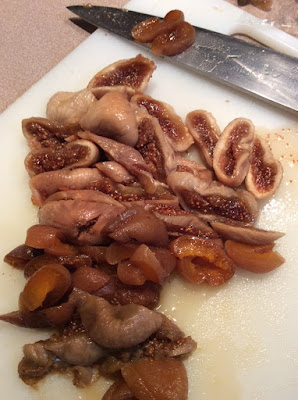January 2016 has been a strange one with several days
still remaining. In the U.S. we’ve seen
record high temperatures, tornadoes, heavy rains and flooding, avalanches, blizzards,
ice storms, and a big earthquake in Alaska. And that’s just on the ground. Over
our heads we’ve had a Mercury Retrograde, the Quadrantids meteor shower, a full
“wolf” moon (so named for the howling of wolves desperate for food in winter), and
a five-planet alignment of Mercury, Venus, Mars, Saturn, and Jupiter for the
first time in over a decade. Mother
Nature has been very busy and it looks like we’ll need all the luck we can summon.
At our house the New Year began quietly with four spoiled
dogs, a toast of sparkling apple-peach cider, and a traditional Dutch treat of aged
Gouda topped with thin slices of candied ginger. Delicious.
New Year’s Day brings traditional “good luck” foods to the tables of many cultures, which generally means black-eyed peas (which are actually beans) and cabbage or some kind of greens for Southerners. The rationale is that
foods representing coins and paper money will improve our fortunes.
I gleaned
some new items for my mental file of useless trivia via a quick read of a “lucky
foods” post on www.epicurious.com. In Spain,
you eat twelve grapes at midnight on New Year’s Eve, one for each stroke of the
clock; if you get a sour grape in the sequence, the corresponding month could
be less than pleasant.
Italians enjoy green lentils with sausage while Germans
consume lentil or split pea soup with sausage. Why the pork? Its fat content signifies
wealth and prosperity. (Don’t get me started on the “pork” our elected
representatives are so fond of in Washington, D.C.) New Year’s fish dishes are
also quite common. Some Germans even go so far as to put a few fish scales in
their wallets for luck. No thanks. I'll take my chances.
Meanwhile, back
at the Samson kitchen, Michel was determined to make lucky black-eyed peas and
cabbage for us in a non-traditional way. He decided to go full-on Moroccan with all the spices he likes to incorporate. The
results were outstanding. We’re awaiting the good luck final report but so far (knock on wood) things are going well.
Ready to cook?
Moroccan Black-Eyed Peas and Cabbage with Dried Fruit and
Pistachios (vegan)
Heat oven to 350 degrees.
You will need:
1 head of green cabbage
2-3 cups of black-eyed peas,
rinsed and drained (can be fresh or rehydrated, i.e. soaked, overnight)
5 dried Turkish figs*,
rehydrated overnight
5 dried apricots*, rehydrated
overnight
A "handful" of dried tart cherries*,
rehydrated overnight
(*Dried figs, apricots, and
cherries can be soaked in the same bowl overnight. Reserve ¼ cup of the liquid
for later.)
A “handful” of Craisins
¼ cup pistachios, ground
 |
| dried figs, tart cherries, apricots, pistachios |
1 preserved lemon, chopped
1-inch piece of fresh ginger,
chopped
5 cloves of garlic, chopped
3 tablespoons olive oil
½ cup vegetable broth
2 sticks cinnamon
1 bay leaf
1 teaspoon salt
1 tablespoon ground cumin
1 tablespoon ground coriander
1 teaspoon ground cardamom
1¼ teaspoons hot red pepper
flakes
First, the black-eyed peas.
In a large skillet:
Heat 1½ tablespoons olive oil.
Add cumin, coriander, cardamom, ginger, cinnamon sticks, and bay leaf.
When spices have heated, add ¼ cup
of liquid from dried fruits.
Cut rehydrated fruits into
coarse slices and add to skillet.
Add salt, red pepper flakes, and black-eyed peas.
Fill in mixture with enough vegetable broth to “just barely cover.”
Bring to a boil then transfer to
a tagine (a 9x13 baking dish will work also if no tagine).
Cover and place in the oven for 30
minutes.
Next, the cabbage.
Grind your pistachios, if you still need to do that.
Heat 1½ tablespoons olive oil in skillet. Add chopped garlic cloves.
Chop preserved
lemon, add to garlic and olive oil in skillet.
Cut cabbage into quarters, cut
out the core, and chop into 1-inch chunks.
Rinse under cold water. Put cabbage in the skillet.
Top
with salt and ground pistachios.
Bring to high heat, reduce when
liquid starts to bubble. Cover and simmer until cabbage is done to your liking.
Lastly,
Mix cooked cabbage with black-eyed peas, top with
pomegranate seeds and serve.










No comments:
Post a Comment